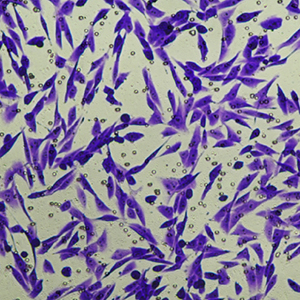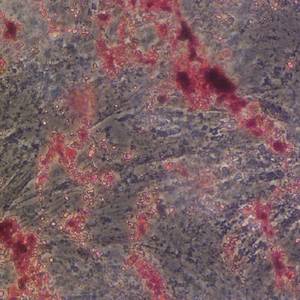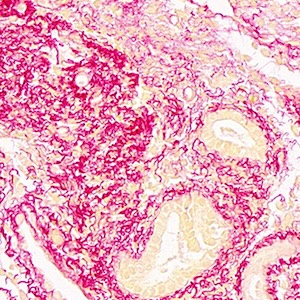Extracellular vesicles from bone mesenchymal stem cells transport microRNA-206 into osteosarcoma cells and target NRSN2 to block the ERK1/2-Bcl-xL signaling pathway

Accepted: 27 April 2022
HTML: 21
All claims expressed in this article are solely those of the authors and do not necessarily represent those of their affiliated organizations, or those of the publisher, the editors and the reviewers. Any product that may be evaluated in this article or claim that may be made by its manufacturer is not guaranteed or endorsed by the publisher.
Authors
Osteosarcoma (OS) is a kind of malignant tumor originating from mesenchymal tissue Bone mesenchymal stem cells-derived extracellular vesicles (BMSCs-EVs) can play important roles in OS. This study investigated the mechanism of BMSCs-EVs on OS. BMSC surface antigens and adipogenic and osteogenic differentiation were detected by flow cytometry, and oil red O and alizarin red staining. EVs were isolated from BMSCs by differential centrifugation and identified by transmission electron microscopy, nanoparticle tracking analysis, and Western blot (WB). miR-206 and neurensin-2 (NRSN2) levels in human osteoblast hFOB 1.19 or OS cells (143B, MG-63, Saos2, HOS) were detected by RT-qPCR. Human OS cells with lower miR-206 levels were selected and treated with BMSCs-EVs or pSUPER-NRSN2. The uptake of EVs by 143B cells, cell proliferation, apoptosis, invasion, and migration were detected by immunofluorescence, 5-ethynyl-2’-deoxyuridine (EdU) and colony formation assays, flow cytometry, scratch test, and transwell assays. The binding sites between miR-206 and NRSN2 were predicted by Starbase database and verified by dual-luciferase assay. The OS xenograft model was established and treated by BMSCs-EVs. Tumor growth rate and volume, cell proliferation, and p-ERK1/2, ERK1/2, and Bcl-xL levels were detected by vernier caliper, immunohistochemistry, and WB. BMSCs-EVs were successfully extracted. miR-206 was diminished and NRSN2 was promoted in OS cells. BMSCs-EVs inhibited proliferation, migration, and invasion, and promoted apoptosis of OS cells. BMSCs-EVs carried miR-206 into OS cells. Inhibition of miR-206 in EVs partially reversed the inhibitory effect of EVs on malignant behaviors of OS cells. miR-206 targeted NRSN2. Overexpression of NRSN2 reversed the inhibitory effect of EVs on OS cells. NRSN2 activated the ERK1/2-Bcl-xL pathway. BMSC-EVs inhibited OS growth in vivo. In summary, BMSC-EVs targeted NRSN2 and inhibited the ERK1/2-Bcl-xL pathway by carrying miR-206 into OS cells, thus inhibiting OS progression.
Downloads
Publication Facts
Reviewer profiles N/A
Author statements
- Editor & editorial board
-
profiles
- Academic society
- N/A
- Publisher
- PAGEPress Publications, Pavia, Italy
To learn about these publication facts, click
PF is maintained by the Public Knowledge Project
Ethics Approval
All procedures were authorized by the Academic Ethics Committee of First People’s Hospital of Kashgar, Xinjiang, ChinaRights
This work was supported by Xinjiang Natural Science FoundationHow to Cite

This work is licensed under a Creative Commons Attribution-NonCommercial 4.0 International License.
PAGEPress has chosen to apply the Creative Commons Attribution NonCommercial 4.0 International License (CC BY-NC 4.0) to all manuscripts to be published.
Similar Articles
- Cecilia Dall'Aglio, Paola Scocco, Margherita Maranesi, Linda Petrucci, Gabriele Acuti, Elena De Felice, Francesca Mercati, Immunohistochemical identification of resistin in the uterus of ewes subjected to different diets: Preliminary results , European Journal of Histochemistry: Vol. 63 No. 2 (2019)
You may also start an advanced similarity search for this article.

 https://doi.org/10.4081/ejh.2022.3394
https://doi.org/10.4081/ejh.2022.3394














